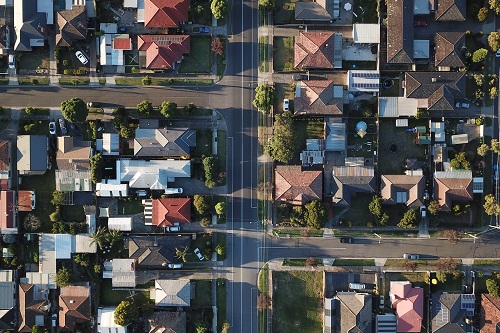Tom Rumble photo
By
Jori Hamilton
The housing crisis in 2008 left a huge mental scar on homebuyers in the U.S. Seeing people forced out of their homes due to foreclosure and watching as the stock market plummeted made any future potential homebuyers incredibly wary of the housing market’s long-term stability. Additionally, as housing costs both for buying and renting have been steadily climbing over the last decade, wages have remained stagnant, putting a financial damper on anyone looking to purchase a home. Homeownership in the U.S. has hit a new low, and no matter a person’s age, buying a house is a daunting prospect — especially after experiencing the first housing crisis.
A New Type Of Housing Crisis
Unfortunately, there is an entirely new housing crisis that might not affect the U.S. stock market, but is in the process of displacing millions of U.S. families and other working class Americans. The new crisis is one of affordability due to rising costs and sparse supply of available homes for purchase. Not only that, but rising interest rates, the diminishing of housing regulations, and increased funding to infrastructure are also contributing to the difficulty of buying a home. Competition for housing is currently incredibly intense, and there is a ripple effect from those being displaced from large U.S. cities in turn outbidding potential homebuyers in smaller cities, pushing them further out into rural areas, where this unintended gentrification continues.
The dynamic between renter and landlord has become more contentious than ever, with many landlords taking unfair advantage of this affordability crisis by steadily raising rent costs even though they have done little to improve the property. Even in historically inexpensive rural states, rent prices have jumped to an unaffordable level for local residents. While it can be tempting to chalk this up to the free market operating as it always has, this is short-sighted; when individuals are burdened with rent that can take up to a third or more of their monthly pay, it leaves them unable to effectively participate in the economy in other areas.
The U.S. housing crisis is a ticking time bomb, and relatively soon it is bound to come to a head in a similar fashion to the 2008 crisis. Low-cost housing is rapidly disappearing, affordable new homes are not being built at a viable rate, U.S. cities are rapidly becoming unaffordable to even those with high salaries, and as a result of all of this, racial disparity is actually getting worse. Black Americans are now 30 percent less likely to own a home than white Americans, and this divide is only getting worse as the housing crisis forces gentrification in more and more places.
Upkeep Costs Are Too High For Many
For those lucky few who do find themselves with enough money to afford a down payment on a home, they will often realize far too late that homeownership comes with several huge, hidden costs. While renting does effectively sap funds from hardworking individuals, preventing them from obtaining the capital necessary to purchase a home, they do have the benefit of not having to worry about repair costs. These costs are instead passed onto the landlord, and many new homeowners don’t realize just how expensive replacing a roof, fixing a water heater, or even simply recarpeting a home can be.
One way that homeowners figure that they can sidestep some of the costs of repairing or remodeling their home is to simply do the labor themselves. However, planning a DIY home renovation is not for the faint of heart and requires a lot of time and budgeting skills to make it happen properly and in a timely manner. Additionally, while labor costs are usually the most expensive part of home repairs or renovations, having a professional take care of it guarantees that it will be done safely and properly.
Homeownership costs go far beyond the expenses of repairs and maintenance. While many people buying their first home assume that it is a wise investment since they are already paying in rent what the cost of what a mortgage would be, they are often surprised by other hidden costs of homeownership. One cost that can easily go unnoticed is the property taxes that new homeowners will have to pay on top of their mortgage, which can often raise the monthly payments that they will be making far out of their initial intended budget.
Millennials Are Hit The Hardest
Though this new housing crisis affects everyone, millennials are by far getting the worst of the situation. Only 32 percent of the over 75 million millennials in the U.S. are homeowners compared to the 75 percent of baby boomers who are currently homeowners. While 45 percent of baby boomers were homeowners by the time that they were 34 years old, only 38 percent of millennials can claim the same fact.
While there are many factors as to why millennials are not buying homes like previous generations, from delayed marriage age to choosing to live in city centers that have higher costs, the main issue is that of shifting economic conditions. Millennials are one of the most highly educated generations in U.S. history, but that higher education came with a hefty price tag, leaving many millennials saddled with enormous student loan debts. Because of this, nearly one third of millennials choose to remain living with their parents in an effort to pay off debts, while many others are forced to take on multiple roommates to afford rent.
Millions of millennials are not homeowners simply because they are locked out of the market. High debts and low wages with fewer prospects for high-paying jobs makes saving up for a down payment on a home a pipe dream for many millennials. It isn’t that millennials are choosing to forgo buying homes, but that they just can’t afford it.
Homeownership has long been seen as a marker that the American Dream has been achieved. However, for many citizens, this dream will never become a reality due to an unfriendly housing market and low wages. There is no clear answer as to how the U.S. is going to avoid another potential housing crash, and unfortunately all that can be done is to wait and see.
Jori Hamilton
Jori Hamilton is a writer from the United States who is passionate about social justice, education, and politics. You can follow her work on twitter @HamiltonJori



No Comments Yet!
You can be first to comment this post!